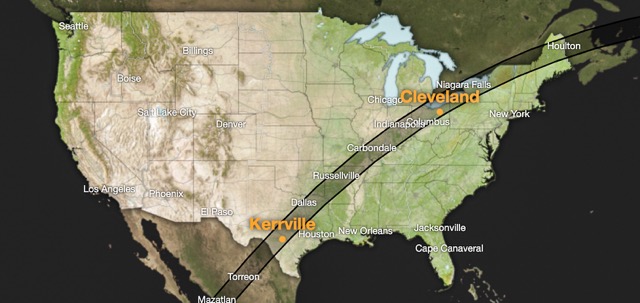Solar Eclipse
PALM DESERT – Catching a glimpse of the total solar eclipse that will occur Monday across the nation’s midsection will be possible from California, even though the “path of totality” will be over 1,000 miles away, and College of the Desert will be hosting a viewing event for the duration.
“A solar eclipse is a rare astronomical event that is worth pausing for,” CoD’s Dean of Math & Science Michael Silveira said. “We are excited to hold this event for our students and community because it helps bring education out of the classroom and into the real world. Watching an event like this makes you wonder about the natural world and inspires curiosity.”
The Palm Desert campus will host its viewing session from 10 a.m. to noon on April 8 at the Science Building, 43-500 Monterey Ave.
Anyone from the community will be welcomed on campus, where School of Math & Science volunteers will provide solar viewers so that attendees can observe the eclipse in progress without risk of eye damage. Information regarding eye protection is available at https://eclipse.aas.org/eye-safety.
In Southern California, less than half the sun will be shaded at the peak of the eclipse, which will begin over the Pacific Ocean and over a roughly two-hour period, result in complete obscuration of the sun by the moon through North America.
Only 13 states will be in the path of totality, according to astronomers. Cities where maximum umbra will occur include Dallas, Texas, Indianapolis, Indiana, Cleveland, Ohio and Rochester, New York.
According to GreatAmericanEclipse.com, the deepest, longest duration for the moon shadow will 4.5 minutes over Northern Mexico, just before the shadow is cast on Texas. The eclipse will be readily visible across the United States’ Lower Great Plains, upper Midwest and New England for about an hour, beginning at 1:30 p.m. Central Daylight Time and ending at 3:30 p.m. Eastern Daylight Time.
“Because of … the exquisite beauty of the sun’s corona hanging in the suddenly darkened sky, many millions will know that a total solar eclipse is something truly worth seeing,” according to GreatAmericanEclipse.com. “Nothing can prepare you for the amazing sight when the sky suddenly darkens, and the sun’s corona shines in the sky. No photograph can capture the stunning beauty.”
The last total eclipse in the U.S. happened on Aug. 21, 2017, when the path of totality swept from Oregon to South Carolina, within a narrow 73- mile wide band. The width of the next week’s path will be about 115 miles across, according to College of the Desert.
For More Education News Visit www.zapinin.com/education.


